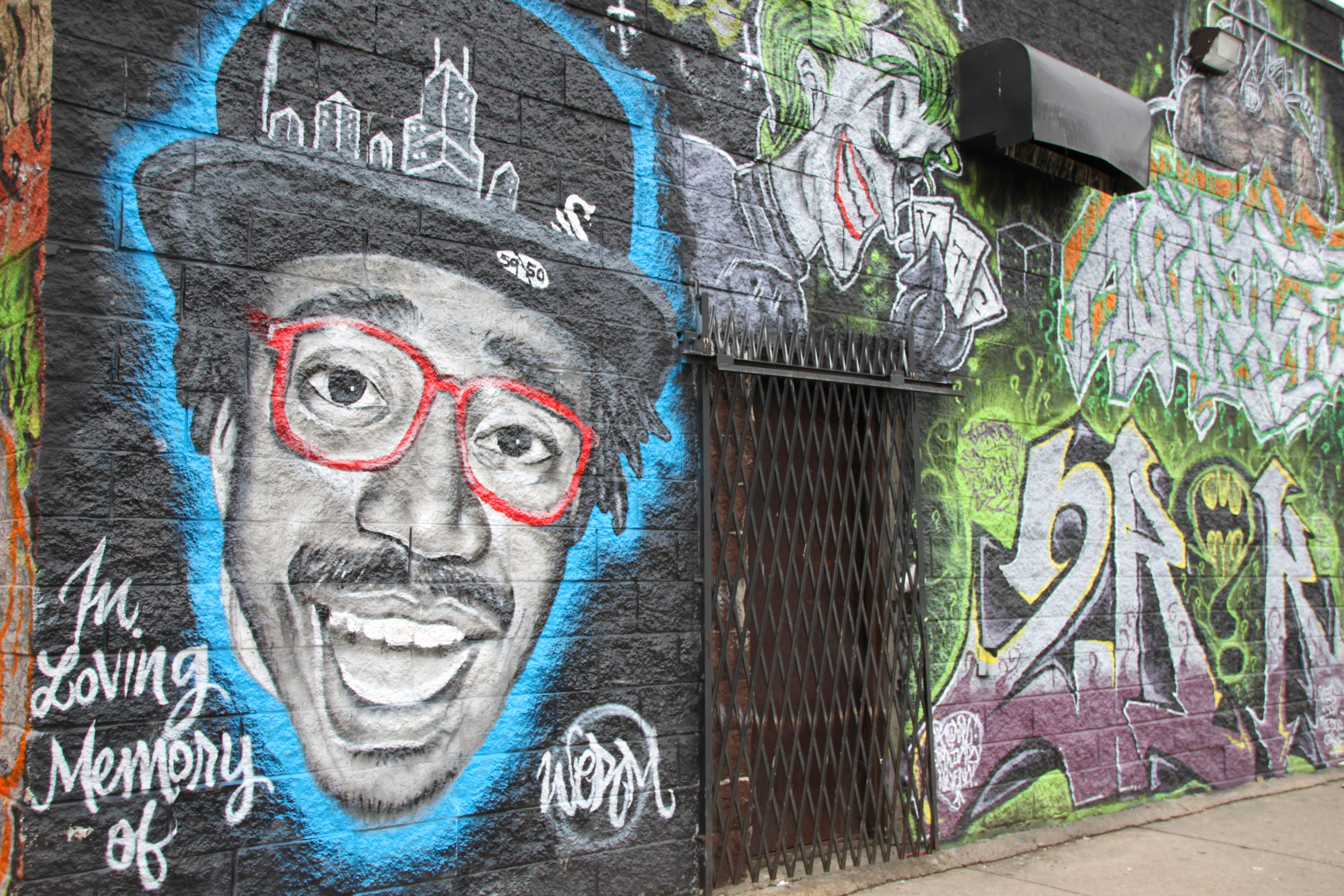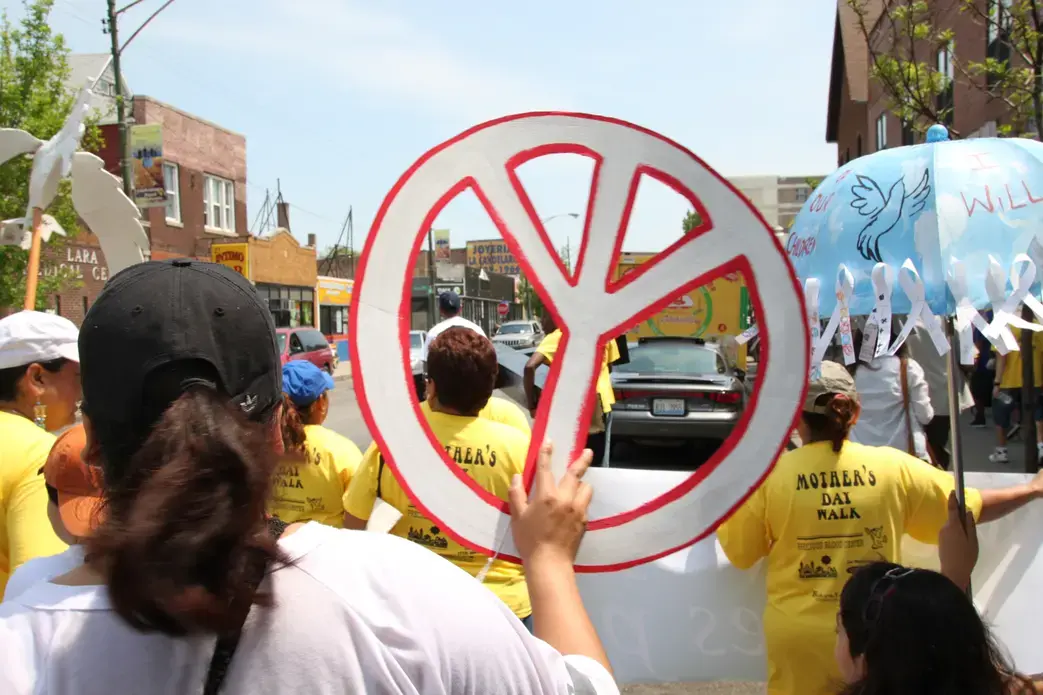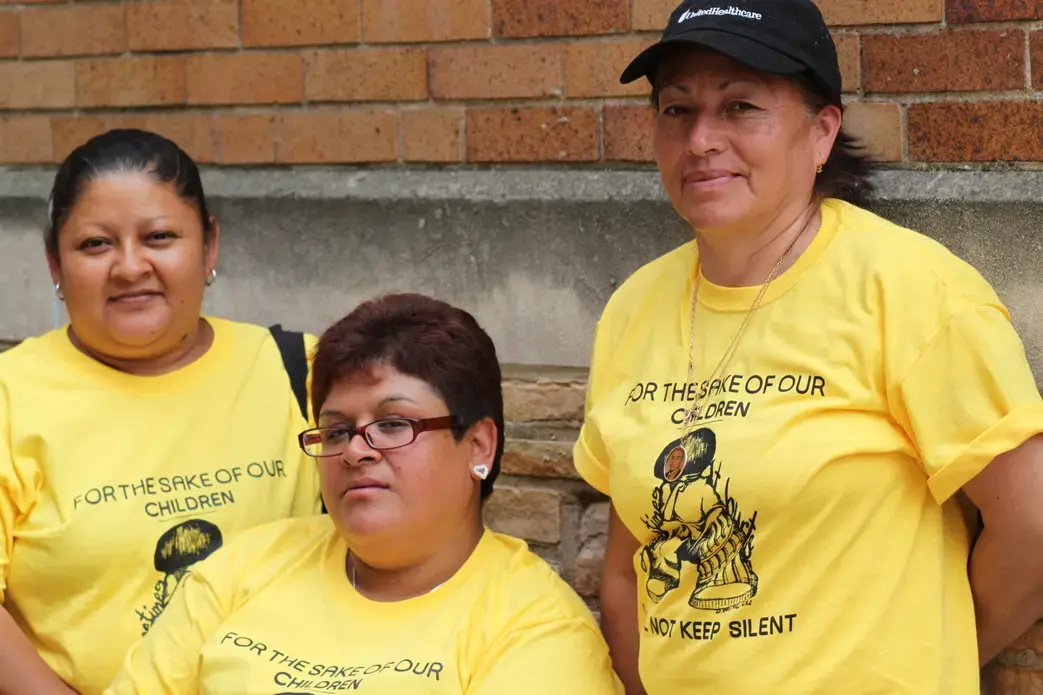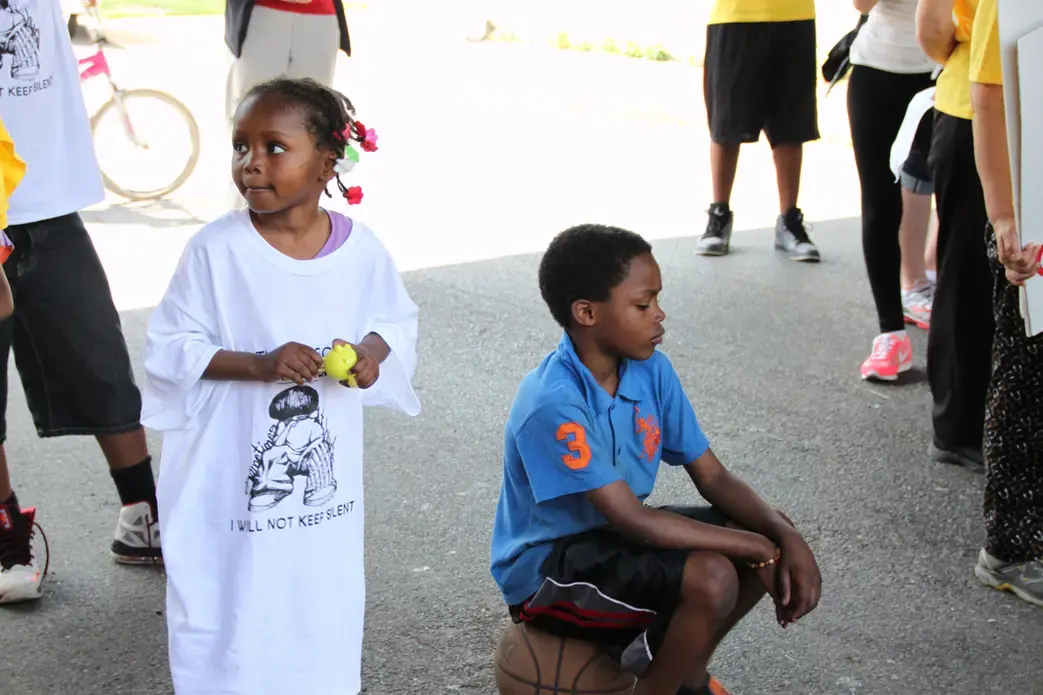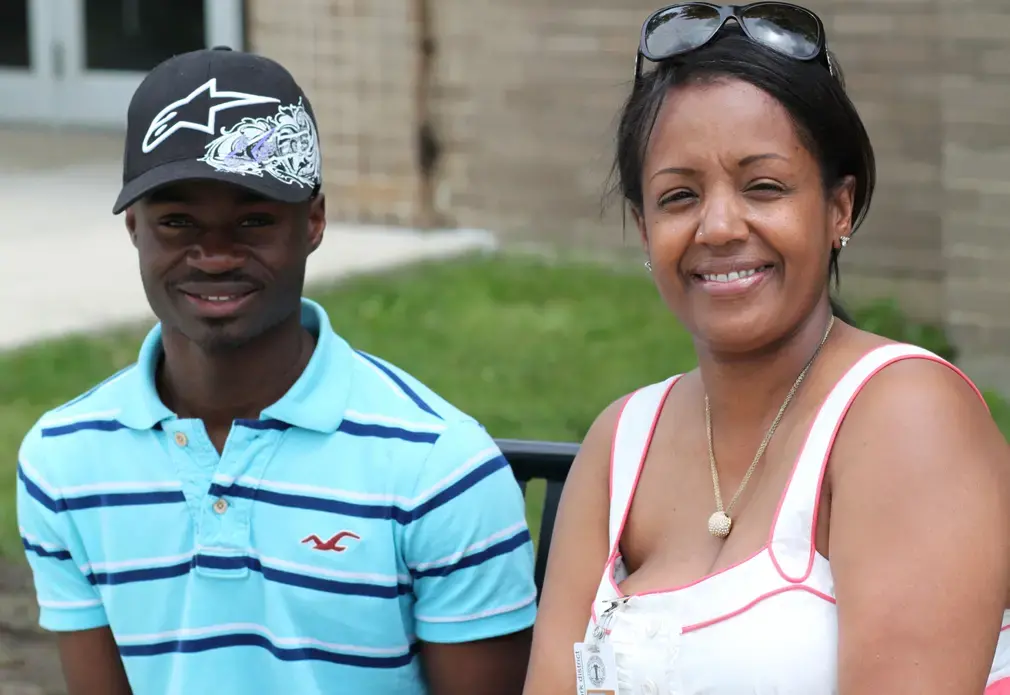Time heals all wounds. That cliché has become a reality for too many families in Chicago. And for many of them reality shows that it is in the end just that, a cliché, and nothing that comes close to how life changes when your son is killed on the street in front or your house and bleeds to death in your arms.
Maria held her son until the end; it will be 12 years this September. That one fatal night, her 19-year-old son just stepped out of the house, crossed the street and got into a crossfire of gunshots. He was not involved, he was not the target. But he is gone. And time does not do anything for Maria. The 54-year-old still lives in the same street, the same house. She walks past the crime scene every day. Time makes things worse, she says. "In the beginning you don't realize that he is gone. But as time goes by you feel his absence."
Maria lives in the Back of the Yards neighborhood on the South Side of Chicago. The tourist attractions of the downtown area are a mere 30 minutes away. But there, along Michigan Avenue's Magnificent Mile, with its shops and restaurants and in the shadow of the extravagant Trump Tower, no one gets shot.
A 2008 study from the University of Chicago Crime Lab shows that the majority of the victims and the perpetrators are likely to be young African-American males who come from poor, single-parent households – and live in Chicago's poorest neighborhoods. "Often they are gang members," says Roseanna Ander, executive director of the Crime Lab. But she stresses the importance of details. "A high percentage of these shootings are impulsive actions." To change social policies and reduce the violence on the street, the Crime Lab collects data from multiple sources and provides the city as well as social organizations with it. "We cannot reduce the amount of guns and so we have to change the environment," says Ander.
Aurelio was both offender and victim. Living in the poor Back of the Yards neighborhood, he was a gang member early in his life. His mother Arcelia blames herself for that. "The parents drive the kids into the arms of the gangs. I started working and my husband, he drinks a lot."
But the 39-year-old Latina didn't give up on her son. She sent him to Mexico, hoping he would change there and find another path in life. And she said he did. Aurelio returned after nine months and went back to school. Shortly afterwards, on Dec. 5, 2010, he was shot at 3.00 a.m. Arcelia found out the next morning at 10 a.m. She is convinced it was his former gang who killed the 16-year-old boy. "He didn't want to be with them any more." The killers were never found.
Arcelia lives right next to Maria. And next to Lucia. Lucia's son also was killed but she still cannot talk about it in public. Three women who live on the same block and share the same story. "Violence is hyper-concentrated," says Andrew Papachristos, a sociologist at Yale University who has been doing research on gangs and their behavior for years and who grew up in Chicago. Carrying a gun, he says, increases the social status, but those possessing one don't run around shooting people all the time. But if they do, those who get killed don't a voice that is likely to be heard. "People don't want to save young men with a criminal record," says Papachristos.
People do want to save children like Hadiya Pendleton. The 15-year-old girl was part of President Obama's inauguration celebrations in January and was shot and killed in an alley in Chicago a few days afterwards. The case sparked national and international attention in part because First Lady Michelle Obama attended the funeral. Two gang members were arrested for the homicide; they say that Pendleton was not the target.
Stacey Lowe gets a little angry when she hears the name Hadiya Pendleton. She lost her daughter in April 2012, but it was not a high profile case. "For the police it was just one more murder." Lowe's daughter Michelle was 21, about to graduate from college with plans to join the Navy when she went out with her friends from Forman Mills after work. They wanted to go bowling, but got lost on the way. Michelle talked to her mother on the phone. It would be the last time they would talk. What happened afterwards Lowe only knows from what people told her.
Michelle and her friends ended up at a party in another part of the city; the young woman got into an argument with the nephew of the host who was celebrating his 35th birthday that night. Michelle threatened to call her father when the argument got heated, but eventually she and her friends decided to leave. Michelle's friends were in the car already when Michelle walked down the front stairs, on the phone with her older sisters. She made it out of the house when the host appeared in the door and fired three shots. Two hit Michelle in the buttock, one in the back. It hit the aorta. Michelle was pronounced dead in the hospital at 5:02 a.m.
The man who killed Michelle was never arrested. "Hours after her death the police knew who to go after, but they didn't put enough manpower out," says Lowe. Anger, it seems, is easier to handle than grief. Of course she knows that prosecuting the perpetrator would not make grieving any less painful. Nothing can do that, not the therapy that she quit nor the talks with her other children or her partner. "But he couldn't kill another daughter."
At the first anniversary of Michelle's death her family went back to the crime scene at the corner of Springfield and 18th street. They sent off 21 balloons in her favorite color and said a prayer. Stacey Lowe thought about moving to another city. She has two more daughters and a foster son and calls herself "overprotective" since Michelle got killed. But Michelle is also the reason why Lowe stays. "She is buried here and I couldn't leave her behind."
Her daughter's death didn't make national news. Neither did Arcelia's son's death. Arcelia experiences violence in her life almost daily. Her home is the neighborhood where shootings are as much a reality as five dollar café lattes are not. She desperately wants to move. Away from that reality that leaves her without any hope at age 39.
"It's killing you slowly," Arcelia says. As soon as her 14-year-old son graduates from high school she hopes to walk away from the violence. Her friend Maria will stay. Her kids and grandkids are in the neighborhood. And besides that, she believes: "It wouldn't be different if I did, anyways."


